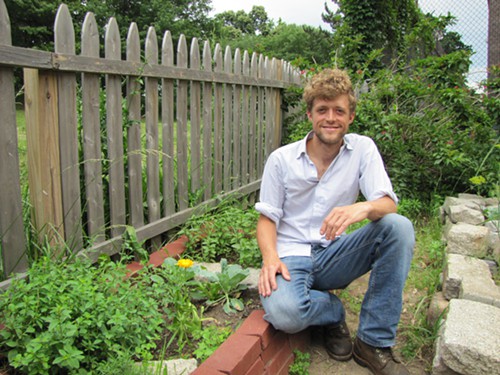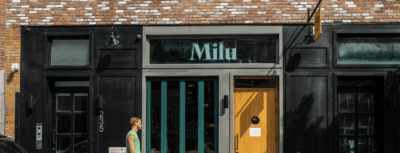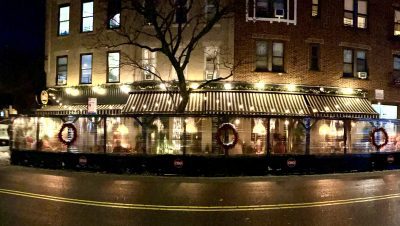A Look Inside Fort Greene Park’s Revolutionary Era Garden

For the past few sunny months, Daly Clement has risen at 5am, headed to nearby Fort Greene Park and dragged a 500-foot hose from the Visitors Center at the park’s monument down the hill to his garden to water the crops before going to work. But very soon, thanks to a grant, a drip-irrigation system will be installed in the vegetable and herb beds to take care of this job. It’s one of the growing improvements that’s been made ever since the Revolutionary Era garden was constructed in winter of 2010-2011.
The 60×30-foot plot near the base of the hill, by the Willoughby Street entrance to the park, has been tended to in part this past year by a class of first-graders from The Urban Assembly Academy of Arts & Letters, nearby in Fort Greene. Clement, a board member of the parks conservancy, has taught gardening workshops to them each Wednesday of the school year. On Saturdays, he holds workshops for walk-in volunteers from 2-4pm at the garden. Visitors can expect to help weed, plant seeds and transplant seedlings, and all ages are welcome. Soon, a class from the summer program at Extreme Kids, a school specializing in children with cognitive disabilities, will begin Wednesday workshops. Most of the harvest is donated to local food pantries and soup kitchens, and volunteers are encouraged to take home anything they like.
Taking a break against the garden’s fence last Saturday, Clement noted the differences between teaching kids about gardening as opposed to adults. During the week, Clement teaches gardening to a home for autistic adults in Oyster Bay, Long Island. “Kids really like smelling the herbs, especially this chocolate mint,” he said, brushing the sprigs of chocolately-smelling leaves. “So we might do more with herbs going further.”


There are currently a couple beds yet to plant, ripe for this or other edible opportunities. The asymmetrical configuration of the raised-bed garden is designed in the likes of a “kitchen garden” according to Clement—but with a twist. Most of the vegetables and herbs reflect those that were grown during the American Revolutionary period, such as cabbages, and the vibrant, purple-flowered borage. The raised beds are constructed from salvaged stones that were once part of a wall near the park’s monument.
“Located in the center of Fort Greene Park is the Prison Ship Martyrs Monument, a towering commemoration of the 11,500 American prisoners of war who died on ships in Wallabout Bay between 1776 and 1782. So the park is a very sacred place for anyone interested in American history. Why not keep this in mind when I put the garden together, I thought?” said Clement.
However, there are a few exceptions to the Revolutionary-themed rule. A young row of tomato plants for example. “Everybody likes tomatoes,” said Clement. “So even I can’t resist them.”
To volunteer at the Revolutionary Era Garden, visit Fort Greene Park from 2-4pm on Saturdays, and see the Visitors Center for exact location details.
You might also like 



















